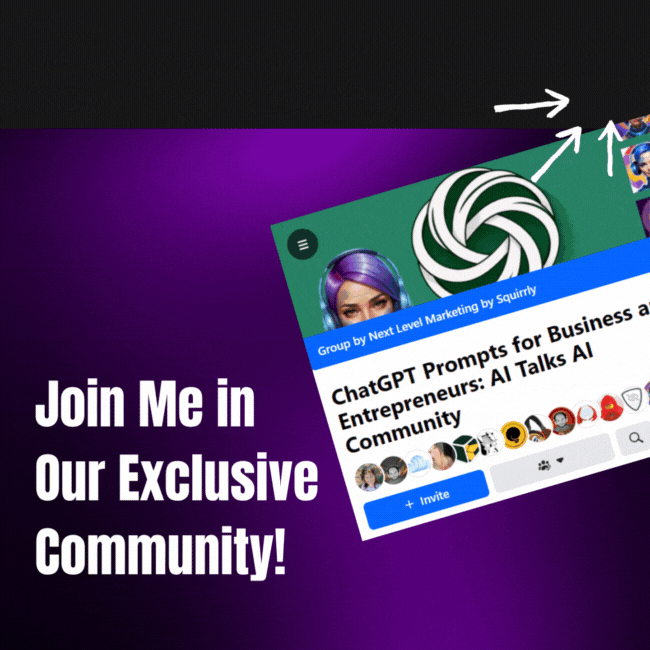Email marketing is the Swiss Army knife in your digital marketing toolkit.
It’s versatile, dependable, and, if used correctly, can be an absolute game-changer in boosting your conversion rates. Now, how many of you have thought, “Email marketing is so last decade“? Well, prepare to have your minds changed.
With the right strategy, email marketing for conversions can transform the way you engage with your audience, turning casual readers into loyal customers.
By the end of this blog post, you’ll be equipped with practical, actionable tips to revamp your email campaigns.
We’re talking about strategies that go beyond the basic “best practices” you’ve read a dozen times.
So, if you’re ready to dive deep into the art and science of email marketing that generates more conversions, you’re in for a treat.
Understanding the Power of Email Marketing for Conversions
First things first: Why should you even bother with email marketing in an age dominated by social media and instant messaging?
The answer is simple: precision and personalization. Email allows you to land directly in your audience’s inbox, where you can speak to them on a one-on-one basis.
This personal touch is incredibly powerful for conversions.

Crafting Your Email for Maximum Engagement
The secret sauce to email marketing for conversions lies in how you craft your message. It’s not just about what you say, but HOW you say it. Here are a few tips to make your emails impossible to ignore:
- Subject Lines That Stand Out: Your subject line is your first impression. Make it intriguing, funny, or so compelling that curiosity won’t let your readers ignore it.
Crafting email campaigns that lead to conversions hinges significantly on the ability to captivate your audience from the get-go. The subject line of your email acts as the gateway to your message; it’s the make-or-break element that decides whether your email gets opened or doomed to the abyss of the unread.
Think of your subject line as the headline of a news article or the cover of a book.
It needs to spark curiosity, evoke emotions, or promise something valuable.
Crafting a subject line that stands out involves understanding your audience’s interests and pain points. You could use a bit of humor to lighten their day or pose a compelling question that resonates with their current challenges.
The aim is to create a connection the moment they see your email in their inbox, making it too enticing to pass by.
- Personalization Beyond the First Name: We all know the trick of using the recipient’s first name, but true personalization digs deeper. Segment your audience and tailor your messages to match their interests, behaviors, and needs.
Personalization beyond the first name takes your email marketing efforts from good to great. In an era where consumers are bombarded with digital content, generic messages no longer cut it.
True personalization means understanding your audience at a granular level.
This involves segmenting your email list based on detailed criteria such as purchasing behavior, content preferences, engagement levels, and even life events. Tailoring your messages to match the specific interests, behaviors, and needs of your segments creates a sense of individual attention.
It transforms your emails from broad broadcasts into personal conversations. Imagine sending a tailored email to a segment of your audience that recently engaged with a specific product category on your site, offering them a related resource or discount.
Such targeted personalization not only increases the relevance of your emails but also significantly boosts your conversion rates.
- A Clear and Compelling CTA: What action do you want your readers to take? Make it clear, make it bold, and make it impossible to miss.
A clear and compelling Call-To-Action (CTA) is the climax of your email marketing efforts.
It’s the moment where you direct your readers towards the action you want them to take, be it making a purchase, signing up for a webinar, downloading a guide, or visiting a landing page.
The clarity and visibility of your CTA play a crucial role in conversion optimization. It should be unmissable and leave no room for ambiguity about what steps the reader should take next.
Use action-oriented language that incites enthusiasm or urgency. The design of your CTA also matters; it should stand out visually from the rest of your email content, often through the use of contrasting colors or whitespace.
Remember, your CTA is not just a button or a hyperlink; it’s a bridge to the next step in your customer’s journey with your brand. Make crossing that bridge as inviting and straightforward as possible.

Leveraging Segmentation for Personalized Campaigns
The one-size-fits-all approach is a no-go in effective email marketing for conversions.
Segmentation allows you to divide your audience into smaller, more specific groups. Why is this important?
Because a message that resonates with a college student might not hold the same appeal for a retiree. Here’s how to do it right:
- Demographic Segmentation: Age, location, job title – these basics can help tailor your messaging.
Demographic segmentation forms the foundation of a targeted email marketing strategy, allowing marketers to tailor their messages to the specific characteristics of their audience segments. By categorizing your audience based on age, location, and job title, you can create content that resonates more deeply with their needs and preferences.
For instance, the tone, style, and type of content that might appeal to a Gen Z audience in urban areas could differ significantly from what might resonate with Baby Boomers in rural settings.
Similarly, professionals in different industries might have varied pain points and interests, which can inform the type of content you create, the products you highlight, and the offers you make.
By leveraging demographic data, you can ensure that your messaging aligns more closely with the life stage, professional challenges, and cultural context of your recipients, making your emails more relevant and engaging.
- Behavioral Segmentation: Track how users interact with your emails and website, then use this data to send them content that matches their interests and stage in the buyer’s journey.
Behavioral segmentation takes personalization a step further by focusing on how users interact with your emails and website. This approach involves analyzing actions such as open rates, click-through rates, past purchases, and website navigation patterns.
The insights gleaned from this data enable marketers to send highly targeted emails that speak directly to the user’s preferences and behaviors.
For example, if a segment of your audience frequently reads content about sustainable living, you can tailor your emails to focus on eco-friendly products or initiatives your brand is involved with.
Similarly, if you notice that certain subscribers are at the consideration stage of the buyer’s journey, you can send them detailed comparison guides or testimonials to help them make a decision.
Behavioral segmentation ensures that the content you send is not just relevant, but also timely, increasing the likelihood of conversion.
- Engagement Segmentation: Not all subscribers are created equal. Identify your most engaged readers and reward them with exclusive content or offers.
Engagement segmentation recognizes the varying levels of interaction among your subscribers. This segmentation strategy differentiates between your most active subscribers and those who engage less frequently.
By identifying your most engaged readers, you can cultivate these relationships further by offering exclusive content, special discounts, or early access to new products.
This not only rewards their loyalty but also encourages continued engagement. On the other hand, for subscribers who engage less frequently, you might implement re-engagement campaigns tailored to reignite their interest in your brand.
Engagement segmentation enables you to adjust your email marketing efforts based on the interest level of each subscriber, ensuring that you allocate your resources effectively and maintain a healthy level of interaction with your audience.
This tailored approach not only enhances the subscriber experience but also maximizes the impact of your email marketing campaigns on conversions and brand loyalty.

The Magic of Automation in Email Marketing
Automation might sound like a buzzword, but it’s a cornerstone of effective email marketing for conversions. Automating your email sequences can help nurture leads without constant manual effort.
From welcome emails to abandoned cart reminders, automation ensures that you’re consistently engaging with your audience at the right times.
A/B Testing: The Key to Refining Your Strategy
A/B testing, or split testing, is your best friend when it comes to optimizing your email campaigns for better conversion rates.
By testing different elements of your emails (like subject lines, email content, and CTAs), you can see what resonates best with your audience. Always be testing; it’s the only way to improve.
Metrics That Matter: Tracking Your Success
To truly understand the impact of your email marketing efforts, you need to track the right metrics. Open rates, click-through rates, conversion rates, and unsubscribe rates provide invaluable insights into what’s working and what’s not.
Keep an eye on these metrics, and use them to continually refine your strategy.
Email Marketing for Conversions: Making It Happen
It’s time to move beyond theory and into action. Start by auditing your current email strategy. Are you personalizing your messages? Are your CTAs clear and compelling? Is your content engaging and relevant?
Use the tips we’ve discussed to overhaul your approach, and don’t be afraid to experiment.
Email marketing isn’t just about selling; it’s about building relationships. It’s about making each subscriber feel valued and understood. When you master this, conversions will naturally follow.
Wrapping It Up
Transforming your email marketing strategy to boost conversions requires a blend of creativity, personalization, and data-driven decision-making. By implementing the strategies we’ve discussed today, you’ll not only see an uptick in your conversion rates but also in the overall engagement and loyalty of your audience.
Ready to dive deeper into the world of digital marketing?
Don’t stop here! Our blog is packed with insights on everything from content creation to social media strategies, personal branding trends, and the cutting-edge use of AI in marketing.
Keep exploring, keep experimenting, and most importantly, keep engaging with your audience in meaningful ways.
Your next email could be the one that turns a reader into a lifelong customer.













